5 Unique Hybrid Buildings That Showcase the Range of Colonial Architecture
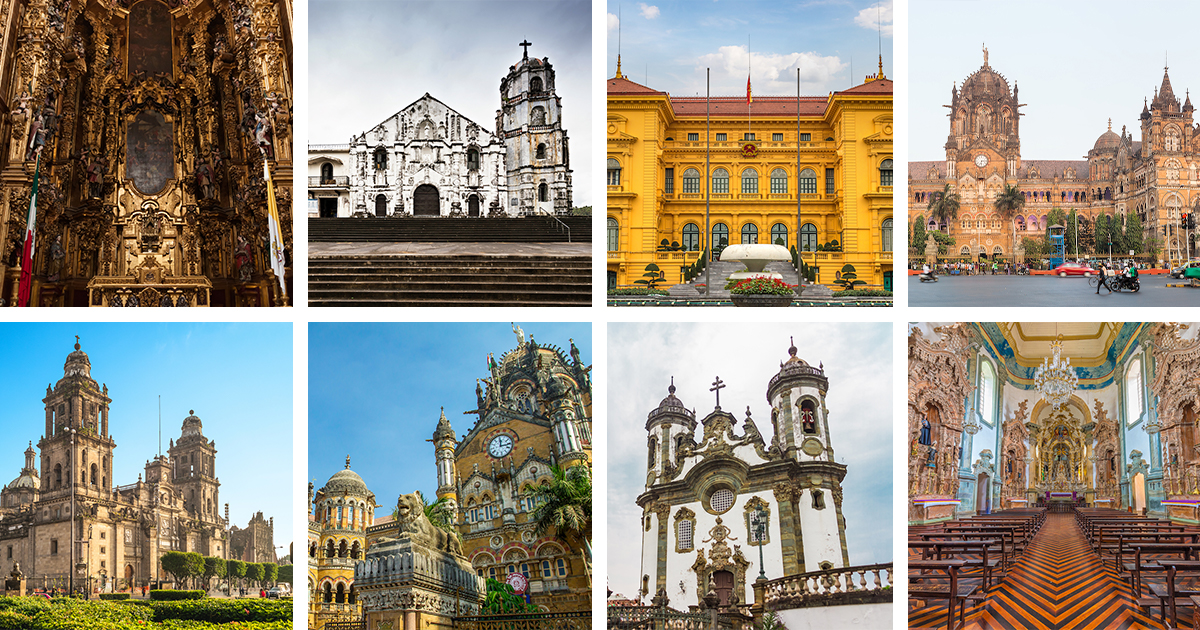
The term colonial architecture is not as simple as Gothic architecture or Art Deco architecture as it does not apply to just one style. It describes work created during a period of colonization and often features a hybrid between the architecture of the colonizers and the architecture of the country where the work is built.
The characteristics of colonial architecture include a great range of styles. The buildings are sometimes Baroque, Late Baroque, Classical, Renaissance, and more. It is still important to understand colonial architecture as a style because it represents a time in a nation’s history where architecture could symbolize oppression, democracy, and much more. In some of the following projects, colonial architecture was once hated but is now beloved as a part of the community. In other cases, the architecture was transformed into something that more appropriately celebrated its context.
Some projects are also far more hybrid than others, like the Chatrapati Shivaji Terminus which blends qualities of Victorian Gothic architecture and traditional Indian motifs. Others are more representations of the colonizing entity’s style. In both cases and despite difficult histories, these buildings have come to represent important periods of history and interesting architectural ideas.
In this article, we break down some of the complexities of colonial architecture and introduce you to some interesting international examples.
Examples of Colonial Architecture
São Francisco de Assis Church

São Francisco de Assis Church in São João del-Rei, Minas Gerais, Brazil (Photo: Stock Photos from Hugo Martins Oliveira/Shutterstock)
São Francisco de Assis Church is one of the Seven Wonders of Portuguese Origin in the World. It was designed by Antônio Francisco Lisboa, an influential designer and sculptor of colonial Portuguese/Brazilian architecture who was sometimes known as Aleijadinho, or “the little cripple” because of his disfiguring skin disease that cost him his fingers. He was the illegitimate son of Manuel Francisco da Costa Lisboa and the African woman he enslaved named Isabel.
Built in 1766, the Church of São Francisco de Assis is full of Baroque influences, namely the Rococo or Late Baroque style. Though this is a great example of Portuguese colonial architecture in Brazil, it, unfortunately, demonstrates how little of Brazilian design and culture was included in the architecture of the time.
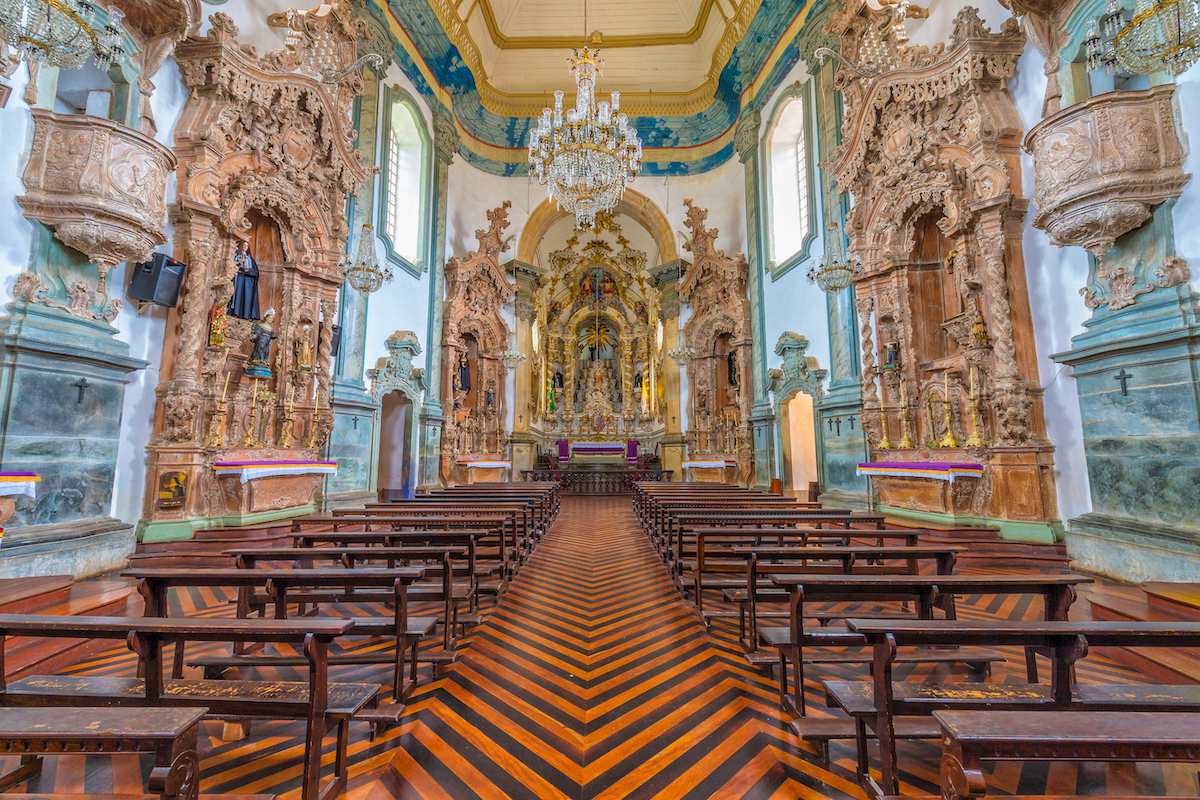
São Francisco de Assis Church in São João del-Rei, Minas Gerais, Brazil (Photo: Stock Photos from GTW/Shutterstock)
Chatrapati Shivaji Terminus

Chatrapati Shivaji Terminus in Mumbai, India (Photo: Stock Photos from Mazur Travel/Shutterstock)
Chatrapati Shivaji Terminus is an example of British colonial architecture in India and was designed in the Victorian Gothic Revival style. Built in 1887, the station was originally known as the Victoria Terminus as a station to honor the 50th year of Queen Victoria’s rule. It was later changed to honor a 17th-century Indian ruler named Shivaji.
Unlike some of the other examples on this list, the station blends both British preferences in the Victorian Italianate Gothic Revival style and traditional Indian motifs throughout the building to create an interesting hybrid work. The turrets, pointed arches, and ornamentation are all representative of Indian palaces. Some of the detail work was even completed by students in the Mumbai institution of Sir Jamsetjee Jeejebhoy School of Art. The materiality of the building even represents the dual-identity with Indian sandstone and limestone and Italian marble.

Chatrapati Shivaji Terminus in Mumbai, India (Photo: Stock Photos from Mazur Travel/Shutterstock)
Mexico City Metropolitan Cathedral
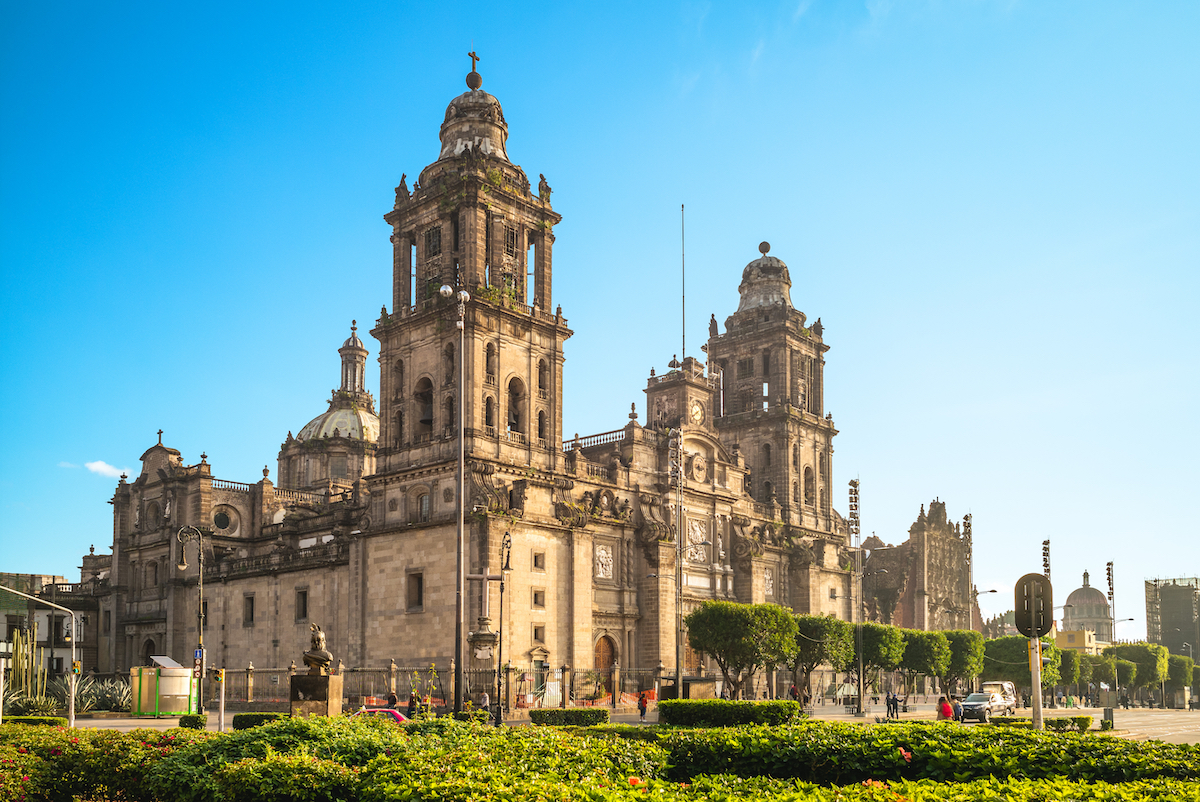
Mexico City Metropolitan Cathedral in Mexico City, Mexico (Photo: Stock Photos from Richie Chan/Shutterstock)
The Metropolitan Cathedral of the Assumption of the Most Blessed Virgin Mary into Heaven, or simply the Mexico City Metropolitan Cathedral, is a Catholic church in Mexico City. Like many other examples of colonial architecture, this building was built on ground that was sacred to the original people using the land. Spanish forces replaced the sacred Aztec area with this massive church slowly and in phases from the 16th to the 19th century. The colonial forces even used brickwork from the original religious site for the Church, the first stone of which may have been laid by Hernán Cortés.
Like many other cathedrals built over such a large period of time, styles and preferences changed during the construction. The current cathedral is made up of mainly Gothic elements, though it gradually introduced elements of Baroque, Churrigueresque—an “ultra-Baroque” Spanish interpretation of the Baroque style, and Neoclassical architecture. The cathedral is now an important part of culture in Mexico City and often acts as the backdrop for important cultural and political activities.
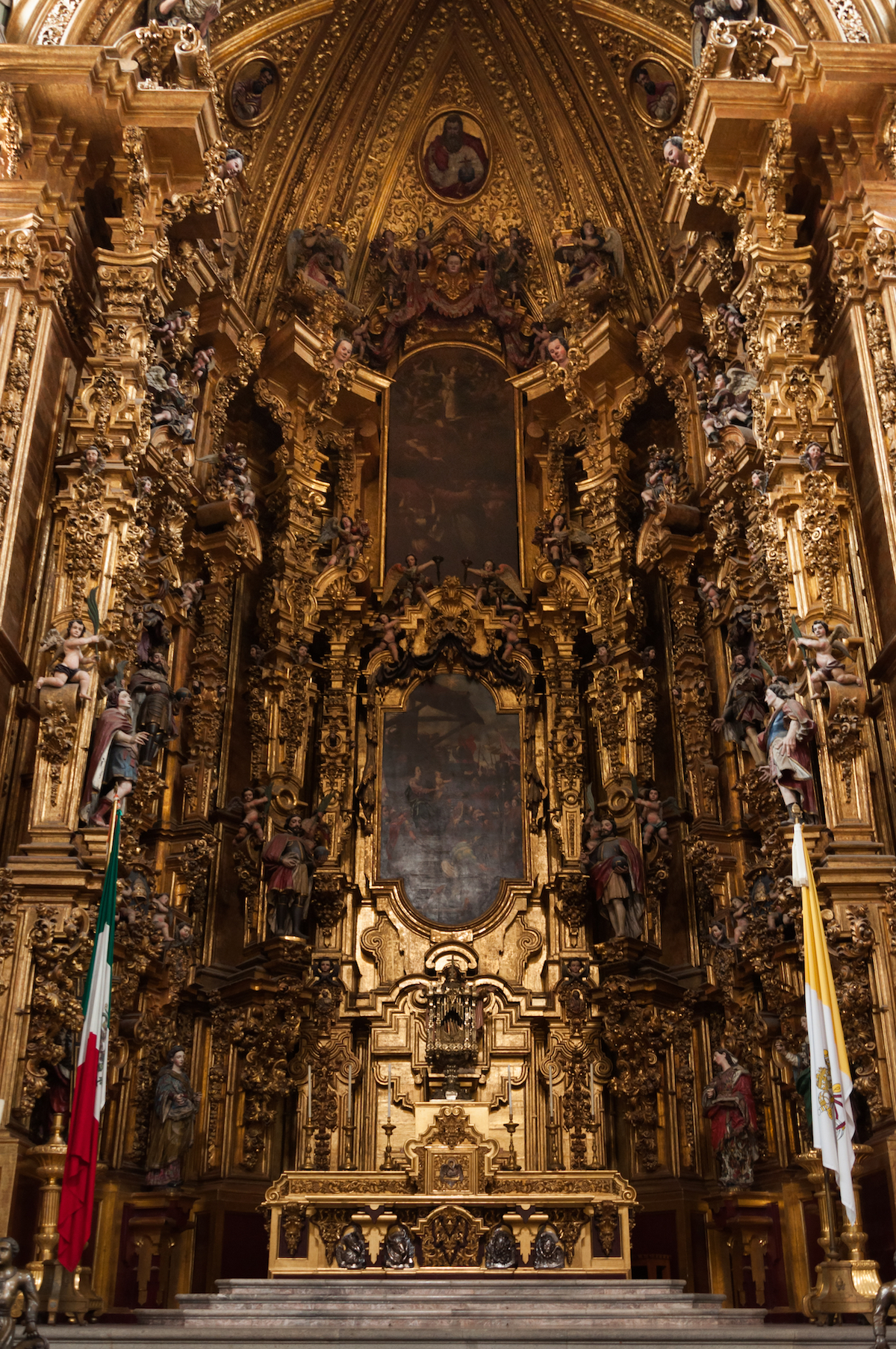
Mexico City Metropolitan Cathedral in Mexico City, Mexico (Photo: Stock Photos from Marisol Rios Campuzano/Shutterstock)
Daraga Church
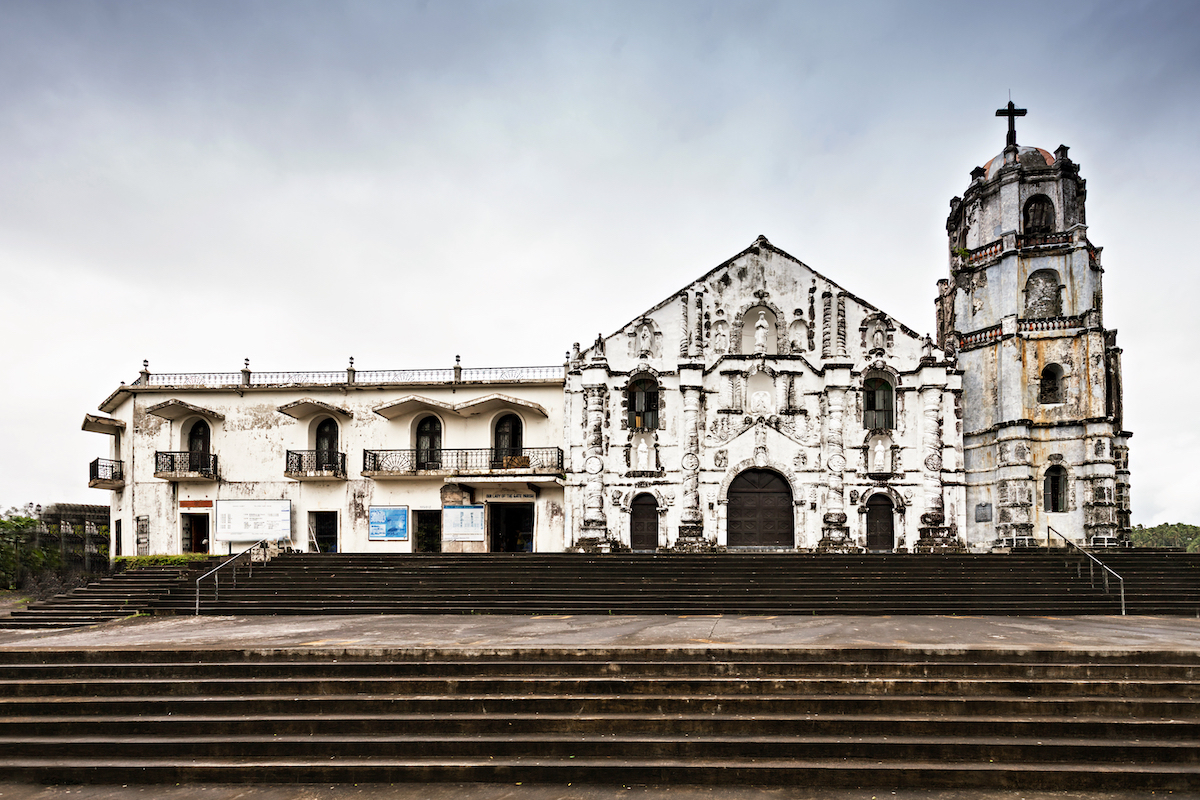
Daraga Church in Legazpi, Philippines (Photo: Stock Photos from saiko3p/Shutterstock)
Nuestra Señora de la Porteria Parish Church, or Daraga Church, is a Catholic church in Daraga, Albay, Philippines. Part of this building’s beauty is the way it complements and overlooks the Mayon Volcano beyond the hill. The volcano is also responsible for the church’s construction as Franciscan missionaries built it as a refuge for victims of an eruption.
Daraga Church is full of design details of many different styles, including Renaissance, Gothic, and Churrigueresque, an “ultra-Baroque” Spanish interpretation of the Baroque style. The baroque design influences make it a fitting building for this list.
Presidential Palace in Hanoi
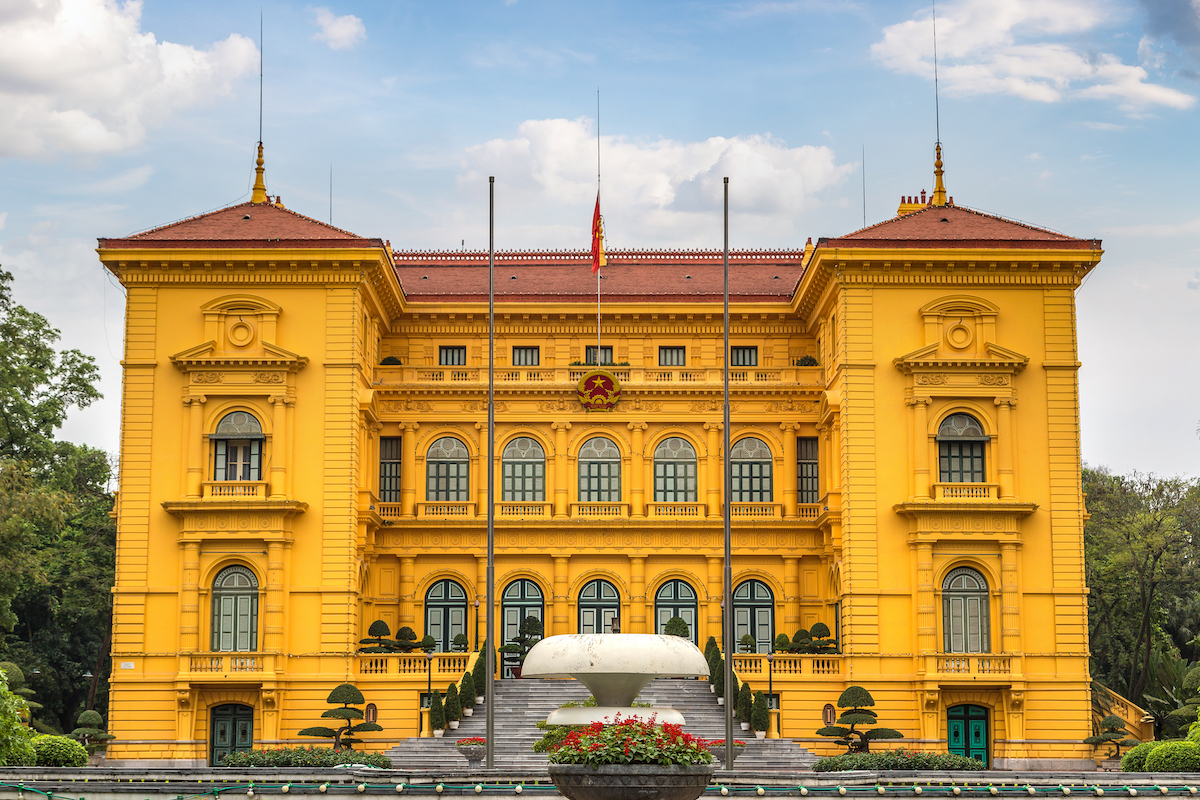
Presidential Palace in Hanoi, Vietnam (Photo: Stock Photos from S-F/Shutterstock)
This brightly colored building called the Presidential Palace in Hanoi is a perfect example of how color or texture can transform colonial architecture into something more vibrant or unique. It was built by the architect for French Indochina, Auguste Henri Vildieu, as the center for the French government.
Aside from the color and tropical plants included in the landscaping, no other nod to Vietnamese culture was included in the French Colonial and Italian Renaissance building. Possibly because of this, influential Vietnamese political leader Ho Chi Minh refused to live in the Presidential Palace. Instead, he built a carp pond and Vietnamese stilt house to make the project more appropriate for the area. This is a perfect example of how architecture can either oppress or celebrate a culture and people.
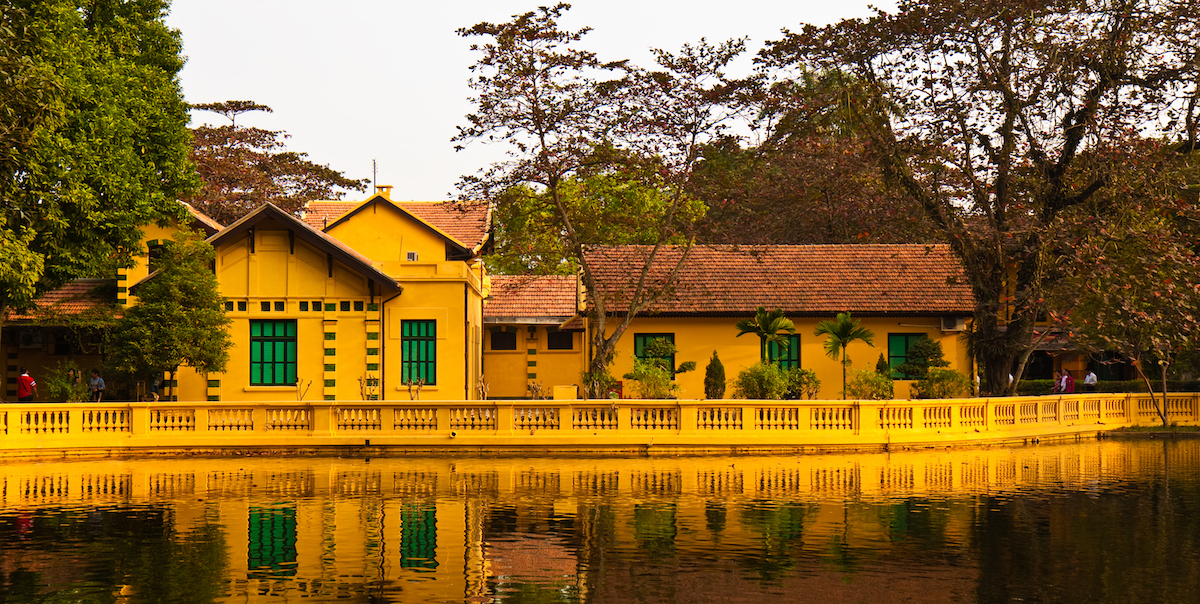
Presidential Palace in Hanoi, Vietnam (Photo: Stock Photos from Nickolay Stanev/Shutterstock)
Related Articles:
5 Awe-Inspiring Gothic Cathedrals That Celebrate the Flamboyant Architectural Style
5 Postmodernist Buildings That Capture the Movement’s Playful Side
5 Art Nouveau Buildings That Embody the Elegance of This Architectural Style
5 Art Deco Buildings That Embody the Vintage Glamour of This Architectural Style
5 Baroque-Style Buildings That Celebrate the Extravagance of the Architectural Movement
READ: 5 Unique Hybrid Buildings That Showcase the Range of Colonial Architecture

0 Commentaires